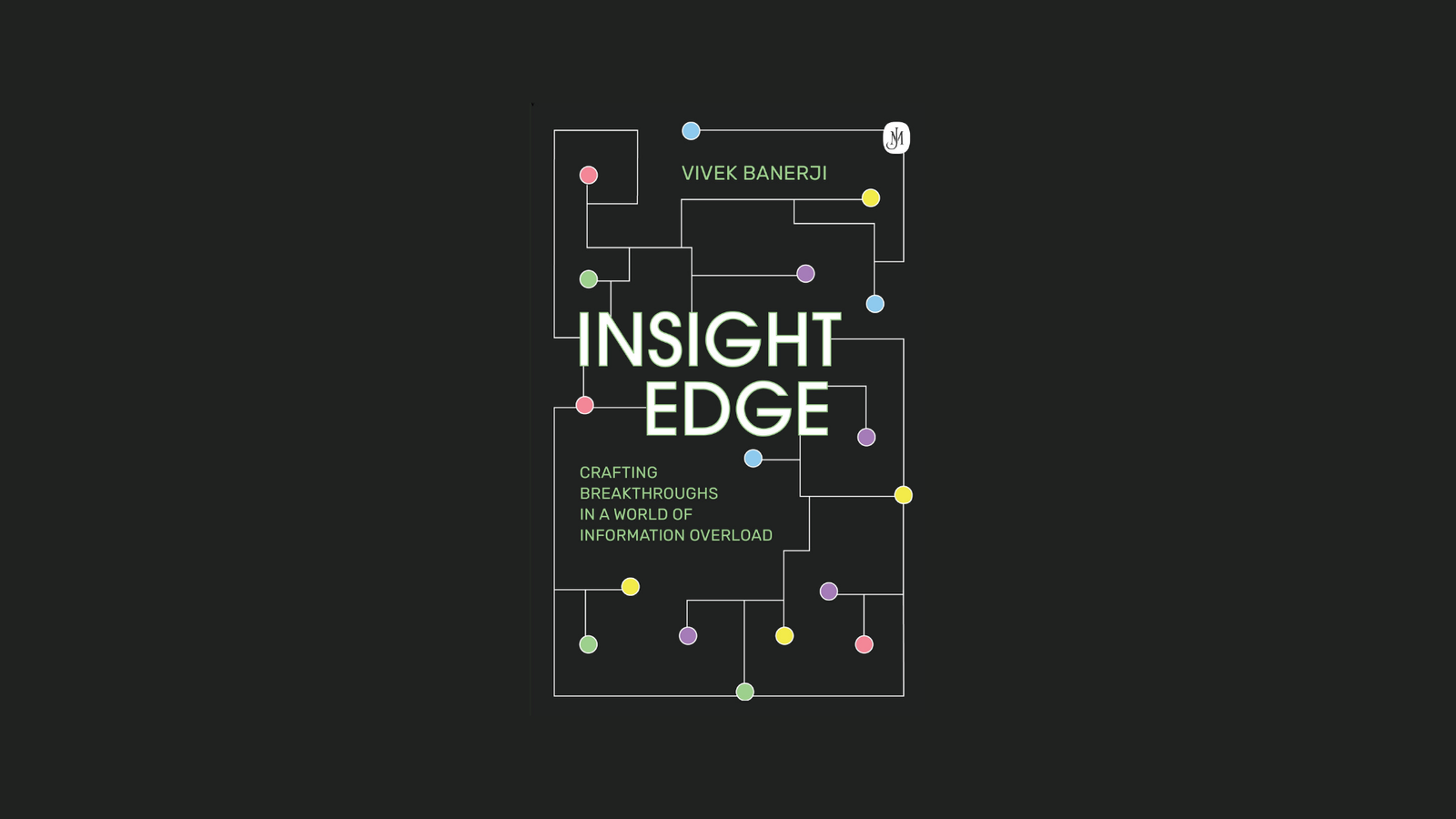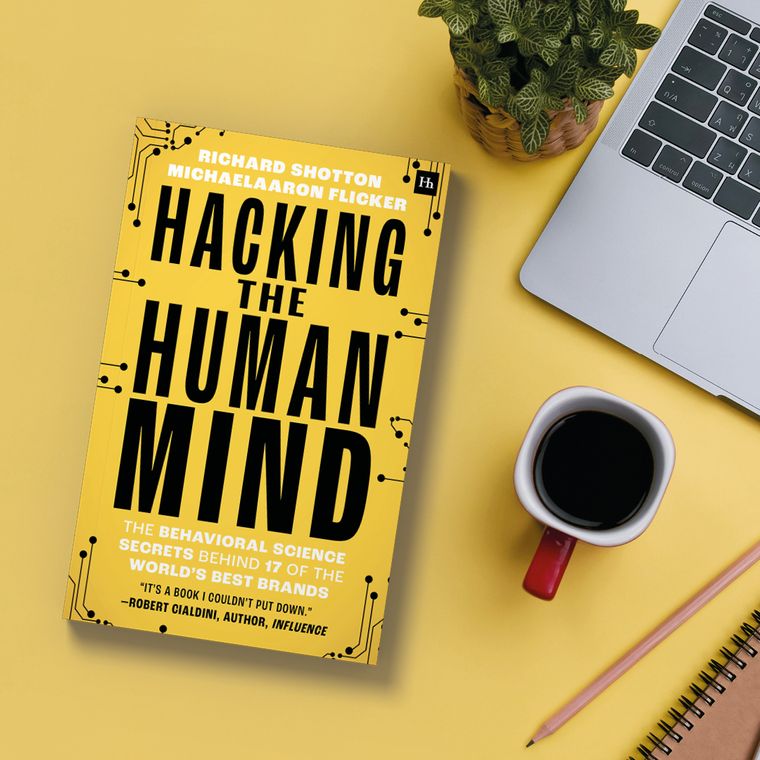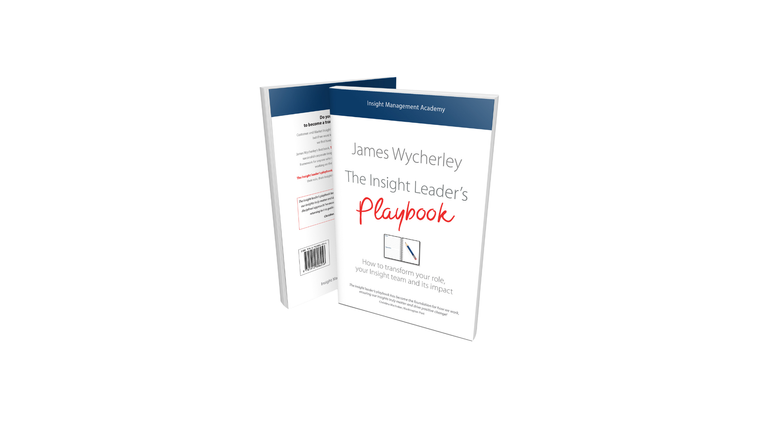Finally! Insight Explained Once and For All
Insight Edge: Crafting Breakthroughs in a World of Information Overload by Vivek Banerji

As with other business sectors, ours is one that enjoys debate, often to the point of heated disagreement in print, online and on stage. The subjects of debate can be varied but frequently revolve around who we are, what we do and why we matter. So it has been with the word “insight”, both in the singular and the plural. What exactly is insight(s) and why should we adopt this word to describe what it is that we do? What was wrong with the word “research”? And so began the existential argument of the last two decades.
I well remember when I and a few industry colleagues were discussing what to call the new American industry association that was being birthed through the merger of CASRO and the MRA. Both parent associations had the word “research” in their titles – in one case, preceded by “survey” and in the other “market”. We agreed that these names merely described the method of our profession, not its reason for being. That reason, we agreed, was to positively impact businesses and society through insight. That was in 2016. The debate that erupted still has not abated – what is this thing called “insight”, how is it defined, is that really what we are here to do?
At some point, all you want is someone to come along and settle the debate once and for all. And that’s where Vivek Banerji comes in with his extraordinary book, Insight Edge.
First, let’s establish Banerji’s credentials. Trained in the veritable ‘university’ of Indian market research, the agency IMRB, he went on first to PepsiCo and then McKinsey where he was a Senior Expert in Consumer Insights and Analytics, both in New York and London. From there he founded his own company, Insight Dojo. Banerji is not content to be a “vendor” – his firm focuses heavily on enabling impact at the highest levels of its clients.
So, what is this thing called ‘insight’, according to Banerji? Well, first he starts off with what it is not. It is not just data, nor should it be conflated with data. In today’s environment, there is a plethora of data from multiple sources and – yes – one of the most important skills that we need to possess is the ability to synthesize across those sources. But these are the ingredients, not the finished product. Nor are they the only ingredients. Insight, argues Banerji, requires that we also deploy lived experiences from all walks of life, both scientific and artistic, to arrive at what essentially are revelations, not just results. As such, he argues that insight is an embodied experience that lives in the human mind. It is a non-linear process – the ability to connect disparate pieces of evidence, to notice the unusual and to derive new and important understanding from little ideas that can cast new light on big issues.
At this point, Banerji turns both to methods and – very importantly – the key modes of thought and action that make insight a likelihood rather than just a possibility. He emphasizes that there are many different ways of thinking and that insight derivation demands thinking that is multimodal. In this he echoes (and acknowledges) M. Root Bernstein’s seminal work of twenty-five years ago, Spark of Genius: The Thirteen Thinking Tools of the World’s Most Creative People in which Bernstein advocates for widespread collaboration among different types of thinkers to feed creative thinking – or, in this case, the birth of an insight.
Banerji’s embrace of multimodal thinking goes to emphasize once again that insight is an embodied experience of the human mind. It is that ability, born of experience and breadth of perspective, to spot the single piece of data that is “in the wrong place” but, with further examination, leads you to revelatory insight. This experience and perspective, deployed in the pursuit of synthesis, cannot be the sole domain of machines but relies heavily on the non-linearity of human thinking and reasoning.
Where the genius and value of this book comes supremely to the fore is in Banerji’s examination of all the ways in which we can harness that non-linearity through a whole series of frameworks that combine deliberate actions, modes of being and learnings from a wide range of disciplines that sit outside the linearity of research methodologies. These include the arts and sports (Banerji himself is a jazz pianist and a black belt in karate) as well as psychology and design. By exercising and improving our ability to use the thinking and language of such disciplines, even if we aren’t expert or even remotely competent in them, we gain interactional expertise that enables us to translate concepts and revelations across silos and different stakeholders.
But even beyond that, Banerji argues that we need to exercise our human qualities (empathy, curiosity, creativity and abstract thinking, for example) and then apply these through what he termed, back in 2008, pragmatic polymathy. Interestingly, polymathy was a key element in the Insights function of the future that Ian Lewis and I envisioned in Leading Edge of Market Research[1] back in 2012. Arguably it is even more important today than it was then. Not only is there a multiplicity of data sources (some of which are both huge and ‘always on’) to be synthesized but there are different types of data sources, many of which lie well outside the normal parameters of research and analytics. The polymath, who is not only central to deriving insights but then carrying their story to all the different silos and functions throughout the business for whom they are critical, has to be intensely pragmatic in the way in which he or she translates them and delivers their message and import. And, even more importantly, he or she has to possess the supreme capability of simplifying the complex so that all who need to understand do so and can act in the confidence of that understanding.
This brief review cannot begin to do justice to the comprehensiveness of this book, nor its deep understanding of insight and its importance to modern-day business and society. Suffice it to say, this is a book that should be taught in every MBA and MMR programme and read by everyone in the insights business, however many years of experience they may have. It’s just that good.
[1] Leading Edge Marketing Research – 21st Tools and Practices; Ed. Kaden, Linda and Prince; Sage Publications, 2012.
Simon Chadwick
Managing Partner at Cambiar Consulting, Editor in Chief of Research World at EsomarSimon founded Cambiar in 2004 to provide strategic assistance to research and insight companies as they face rapid and fundamental change. With 40 years of guiding and managing international organizations of various sizes and stages, Simon’s advice and counsel has helped many companies increase their value – to stakeholders, investors and clients.
He is an acknowledged industry leader, author and conference speaker. In addition to his role at Cambiar, Simon is also a Fellow of the Market Research Society, past Chairman of the Insights Association and Editor-in-Chief of Research World, ESOMAR’s global magazine.
He holds an MA in Philosophy, Politics and Economics from Oxford University, UK, and has done post-graduate studies at both Columbia and Harvard business schools in Change Management and Strategic Management.


